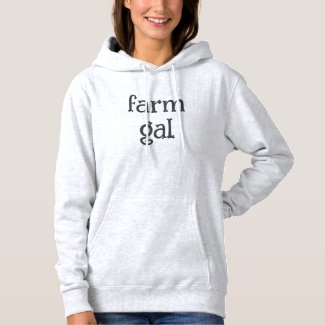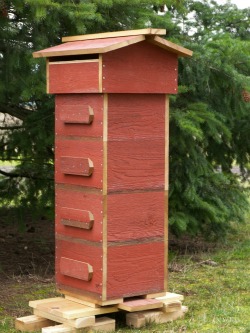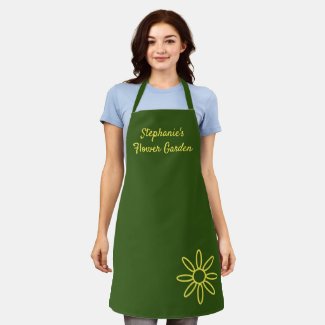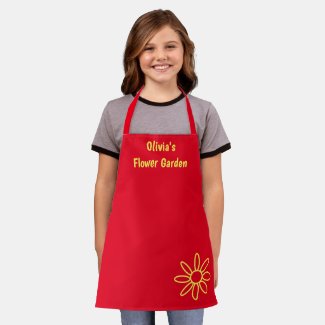Warre beehive -- an alternative hive that can offer healthier bees, simpler harvest, and less expense. You can even build one yourself in a weekend. Produce your own honey and
beeswax, increase crop yield with pollination, and help restore honeybee
health and populations
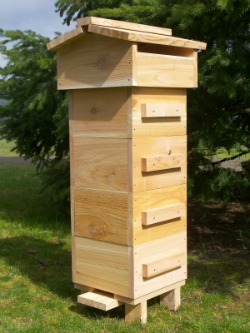 Nick Hampshire's Warre honeybee hive. Search online for his books and plans.
Nick Hampshire's Warre honeybee hive. Search online for his books and plans.Copyright National Lilac Publishing, LLC
The Warre beehive alternative, or the “ordinary people’s beehive.”
The conventional hive we see in commercial beekeeping is the Langstroth hive. Some beekeepers do just fine with their Langstroths. But for others, this type of hive is believed to be stressful to the bees, to be very high maintenance, and tough on back muscles of the bees’ human stewards. The queen is often restricted from certain locations, bees are forced to build honeycombs in unnatural square shapes, and there is less room for bees to move around.
The Warre beehive alternative is a specific type of “top-bar” hive based on an ancient and very practical design -- with some newer special advantages. It’s relatively easy to build and use, and can cost as low as one quarter of the price of a conventional hive. Plus, Warre beekeepers report the bees' health improves with these hives.
The top-bar hive in general is believed to be thousands of years old and most likely invented in Africa. There is a Kenyan version and a Tanzanian version, explaining why top-bar hives are also sometimes called African hives or Kenyan hives. In the earliest versions, beekeepers gathered or cut appropriately sized sticks to use as the bars to lay over open-topped woven baskets. To harvest some honey, they’d just lift one of the sticks, harvest what they needed, and set the stick back into place.
Modern beekeepers who use variations of top-bar hives in temperate climates build hive containers other than open baskets to better help the hive remain dry and safe from temperate weather. People today sometimes create versions of a “horizontal top-bar hive” by, for example, using clean 50-gallon drums mounted sideways and affixed with bars across the top of the drum which has been sawed away.
The Warre hive is also sometimes called the "vertical top-bar hive." It's named after Emile Warré who invented it in France in the early 20th century.
It is bottomless and uses bars (slats of wood) for the bees to build their comb. Bees aren’t forced to build combs in unnatural squares. Instead they can follow their instincts and build beautiful, naturally shaped combs vertically down from the bars. Queens aren’t as restricted to certain chambers and the bees can move around as they’re programmed to without tight quarters.
Several boxes with bars are stacked vertically, and the comb is built vertically. Though from a distance it can somewhat resemble a Langstroth hive to the untrained eye, it is actually smaller and lighter than conventional hives. Warre hives are kept fresh and clean very simply by adding new boxes to the top or bottom, usually in spring, and removing older honey-filled boxes each fall. (Langstroth hives, by contrast, can get very dirty and become difficult to clean.)
It’s considered a type of hive bees enjoy living in, allowing them to follow more of their natural instincts. And, it’s much more of a hands-off method for beekeeping compared to conventional hives. Warre hives are easy to build yourself with simple materials.
Mr. Warré put much into the development of this hive. He wanted to create something economical, simple and bee-friendly that all people could succeed with, and therefore, his hive was sometimes called the People’s Hive. But it has been noted that very similar hives appear to have been independently created in other areas of the world, including Germany and Japan.
Nick Hampshire, who provided the Warre hive photos for this article and who is author of the “Garden Hive Construction Guide,” lives in Gaston, Oregon. He is familiar with all types of hives and their differences. He likes the Warre hive for a number of reasons, and I’ll let him share their differences and his preferences in his own words. “In the case of the vertical top-bar -- Warre, boxes are added to the top or the bottom of the stack to create more hive space as needed. This allows for infinite hive space.”
There are a lot of advantages to a vertical brood nest, one of the best being increased hive warmth during winter. The vertical orientation allows the bees to cluster in a tight huddle. Also, any of the modules are replaceable at any time.”
Nick feels bees prefer the vertical orientation as well. “Bees normally prefer vertical hive spaces for their living quarters. Of course, this is a generality... as many beehives can be found in horizontal and even slanted hive spaces. But as a rule of thumb, their preferred living quarters are vertically tending spaces.”
Type of wood for building your own: Bees are observed to choose old or weathered wood over fresh-cut wood. Recycled timber can work better than new wood as long as it hasn’t been chemically treated. The photo above of the red hive is made of recycled barn wood.
There are favored types of wood to use for hives including Western red cedar which doesn’t need paint or other measures to withstand weather. Other cedars, cypress and Douglas fir also work, but oak can warp easily plus is very heavy, and elm rots quite easily.
Nick's book offers excellent building plans. If you don't want to build your own, there are home businesses that build them on order, some even adding glass to portions of the hive for viewing.
Though many beekeepers purchase honeybees for their first hive, there is also the choice of building a hive and trying to attract a wild colony. Old, larger hives break off with parts of the colony swarming -- or leaving the old hive to find a new home. Swarming season is usually late spring or early summer, but is different for each location, so search your own state or county's swarming timeline so you can have everything set up three or so weeks upfront. The swarms contain mostly worker honeybees, a few drones and of course a queen.
You can rub the insides of the hive with a very small amount of lemongrass oil which mimics a pheromone honeybees emit when they find a new home, and it may help convince them to choose your hive. (YouTube also offers videos on more elaborate lemongrass oil attractants you can make.) Honeybees also seek out good water supplies, so check out our article on honeybee watering stations.


